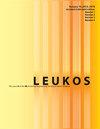Association between Perceived Daylit Area and Self-reported Frequency of Electric Lighting Use in Multi-dwelling Buildings
IF 2.6
2区 工程技术
Q2 CONSTRUCTION & BUILDING TECHNOLOGY
引用次数: 1
Abstract
ABSTRACT This paper examines the association between daytime electric lighting use and perceived indoor daylight availability in residential spaces. In addition, occupant preferences were evaluated, in particular which rooms are prioritized in terms of daylight availability. The study deployed a questionnaire survey that was carried out in typical multi-dwelling apartment blocks in Malmö, Sweden (Latitude: 55.6 °N). Occupants were asked to report how often they use electric lighting during daylight hours (EL) in their kitchen, living room and main bedroom, and how much of the floor area they perceive as adequately daylit (DA) throughout the year. Responses EL and DA were measured in seven-point semantic differential scales, and were correlated (Spearman) to evaluate their association for different room groups. Groups were based on age, room function, façade orientation, balcony obstruction and fenestration geometry. In addition, occupants were asked which room they would choose if there had to be one underlit room. Results indicate that EL is strongly associated with DA in the overall room sample (rS = −0.588, p < .01, n = 225). The association is persistent across room groups of different characteristics, with the Spearman rank correlation coefficient ranging between −0.4 and −0.8, and not differing significantly between groups. In terms of preferences, a significantly high proportion of participants would choose the bedroom if there had to be one underlit room (62%, p < .05), while the kitchen was selected by only 5 out of 108 respondents.在多住宅建筑中,感知的日光面积与自述的用电频率之间的关系
摘要:本文研究了住宅空间中日间照明使用与室内日光可用性之间的关系。此外,还评估了居住者的偏好,特别是哪些房间在采光方面优先考虑。该研究在瑞典Malmö(纬度:55.6°N)的典型多住宅公寓楼中进行了问卷调查。居住者被要求报告他们在白天在厨房、客厅和主卧室使用电灯的频率,以及他们认为全年有多少地板面积是充足的日光(DA)。回答EL和DA采用7分语义差异量表进行测量,并采用Spearman相关法评估不同房间组的相关性。分组依据年龄、房间功能、立面朝向、阳台遮挡和开窗几何形状。此外,居住者还被问及,如果只有一个有灯光的房间,他们会选择哪个房间。结果表明,在整个房间样本中,EL与DA密切相关(rS =−0.588,p < 0.01, n = 225)。这种关联在不同特征的房间组中持续存在,Spearman等级相关系数在−0.4和−0.8之间,组间差异不显著。在偏好方面,如果必须有一个暗室,那么选择卧室的参与者比例非常高(62%,p < 0.05),而在108名受访者中,只有5人选择了厨房。
本文章由计算机程序翻译,如有差异,请以英文原文为准。
求助全文
约1分钟内获得全文
求助全文
来源期刊

Leukos
工程技术-光学
CiteScore
7.60
自引率
5.60%
发文量
19
审稿时长
>12 weeks
期刊介绍:
The Illuminating Engineering Society of North America and our publisher Taylor & Francis make every effort to ensure the accuracy of all the information (the "Content") contained in our publications. However, The Illuminating Engineering Society of North America and our publisher Taylor & Francis, our agents, and our licensors make no representations or warranties whatsoever as to the accuracy, completeness, or suitability for any purpose of the Content. Any opinions and views expressed in this publication are the opinions and views of the authors, and are not the views of or endorsed by The Illuminating Engineering Society of North America and our publisher Taylor & Francis. The accuracy of the Content should not be relied upon and should be independently verified with primary sources of information. The Illuminating Engineering Society of North America and our publisher Taylor & Francis shall not be liable for any losses, actions, claims, proceedings, demands, costs, expenses, damages, and other liabilities whatsoever or howsoever caused arising directly or indirectly in connection with, in relation to, or arising out of the use of the Content. Terms & Conditions of access and use can be found at http://www.tandfonline.com/page/terms-and-conditions .
 求助内容:
求助内容: 应助结果提醒方式:
应助结果提醒方式:


